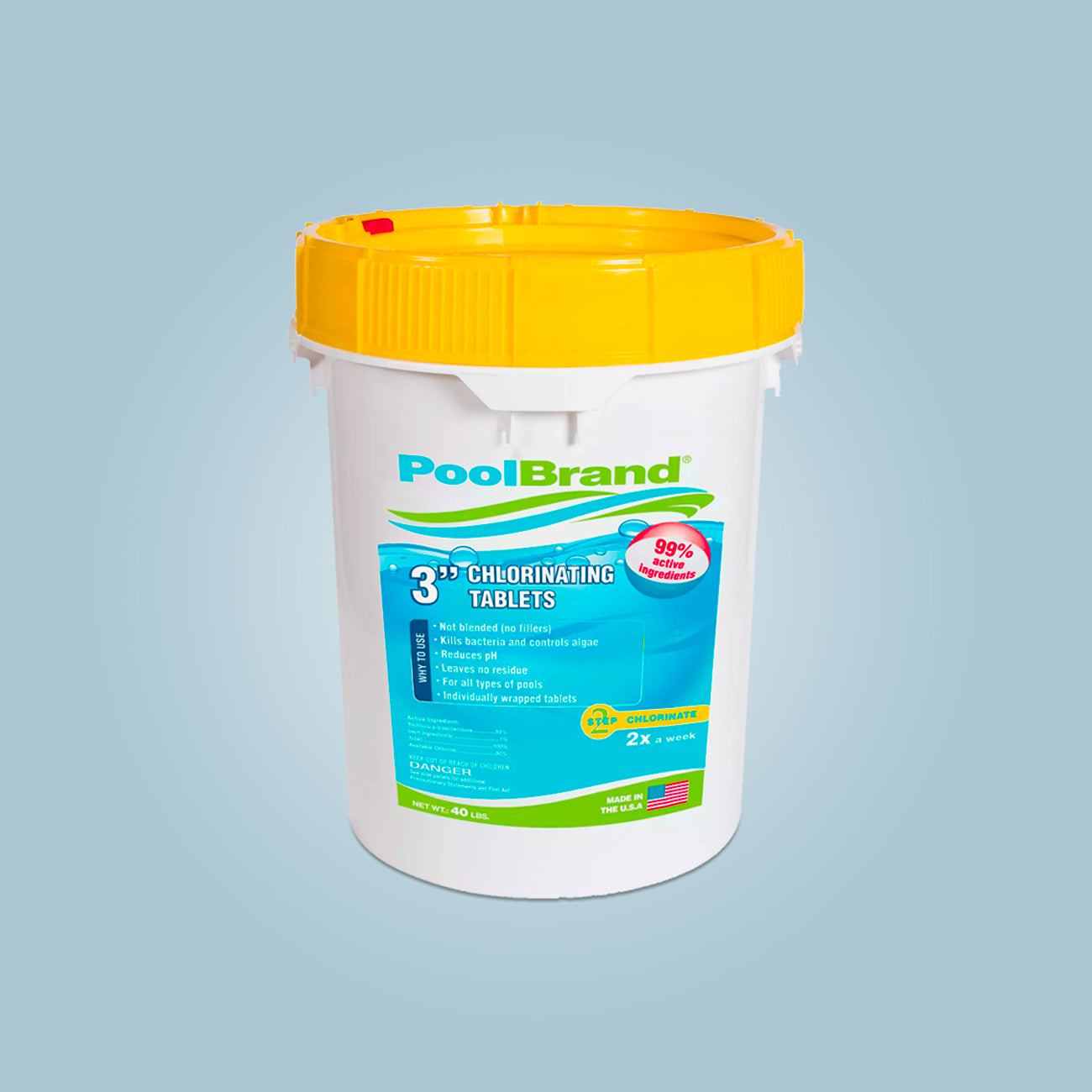How to Test Your Pool Water
Answering all the FAQs about testing water to maintain a balanced pool chemistry
Out of all the pool maintenance tasks you’ll perform over the life of your pool, testing the water is the one thing you’ll do more than anything else. Testing your pool water regularly is essential to keep your pool clean and safe for swimmers. Improper pool chemistry can cause damage to pool equipment, algae growth, irritation to the skin and eyes, bacteria to spread, and more! Testing your water is the only way to know for sure what those invisible chemicals are doing (or not doing) in your pool and can alert you on what changes or adjustments need made.
Since this task is so important, let’s make sure you know how to do it properly and always have the proper testing supplies on hand. Dive in to learn more!
What are the Proper Levels for Chemicals?
The main chemicals to check in your pool are the pH, alkalinity, calcium hardness, and chlorine (sanitizer). In some situations, you may also want to test for metals and stabilizers. Here are the suggested levels to maintain a balanced pool:
- pH: 7.4-7.6
- Total Alkalinity: 80-120 ppm
- Calcium Hardness: 200-400 ppm
- Free Available Chlorine: 2.0-4.0 ppm
- Bromine: 3.0-5.0 ppm
- Cyanuric Acid: 30-50 ppm
- Metals: 0 ppm
- Phosphates: 0 ppm
- Total Dissolved Solids: 0-2500 ppm (non-saltwater pools)
There may be instances where test results may fall slightly outside of these ranges, but that typically is not the end of the world. Maintaining balanced water chemistry does not have to be rocket science if you test frequently and make the needed adjustments. Regularity and consistency will be the key factors to your success with this endeavor.
When Should I Test My Pool Water?
Testing should be done 1-2 times per week. You may want to test more frequently if the pool is used frequently, the weather is exceptionally warm, you’re having water clarity issues, or if a storm recently occurred.

How Do I Test the Water?
Whichever of the above methods you choose, you’ll need to first gather a sample of your pool water to test. Water samples should be taken far from your skimmer and return jets, and well below the surface. Always use a clean container and hold it upside down so the opening is facing the pool floor. Submerge the container about elbow-deep into the water and turn it over so that the air escapes the top and it’s filled completely with water.
If you are using test strips, you will dip a strip into the water sample, quickly in and out, and hold it in the air for about 15 seconds (don’t shake it!). Compare the strip to the color guide on the test kit packaging, and match up the colors on both. Adjust pool chemicals accordingly based on the color results of the test strip.
If you are using a liquid test kit, you’ll collect your water sample in the water collector cup that comes with your test kit. On the side designated for pH testing, add the recommended number of drops of phenol red to the water. On the side designated for chlorine testing, add the recommended number of drops of OTO to the water. Hold the collector up to a white background and compare the colors of the water to the color scales on the collector. The redder the water, the higher the pH, and the yellower the water, the higher the chlorine level. Adjust pool chemicals accordingly based on the color results.
If you are using a digital test kit, you’ll collect your water sample and add the liquid chemicals to the water sample, but instead of having to eyeball color scales, the digital reader does the hard work for you and gives you a digital reading of the results. Based on the digital results provided, you can adjust the pool chemicals appropriately.
Ensure Success & Establish your Water Testing Routine
It’s vital that you maintain a regular water testing and balancing routine – the more you do it the easier it will become too! With instant test strips, easy-to-use liquid test kits, and a little discipline in your maintenance routine, it is very easy to take control of your pool water testing, prevent a lot of problems and expense, and keep your pool beautiful and swimmable all season long.



